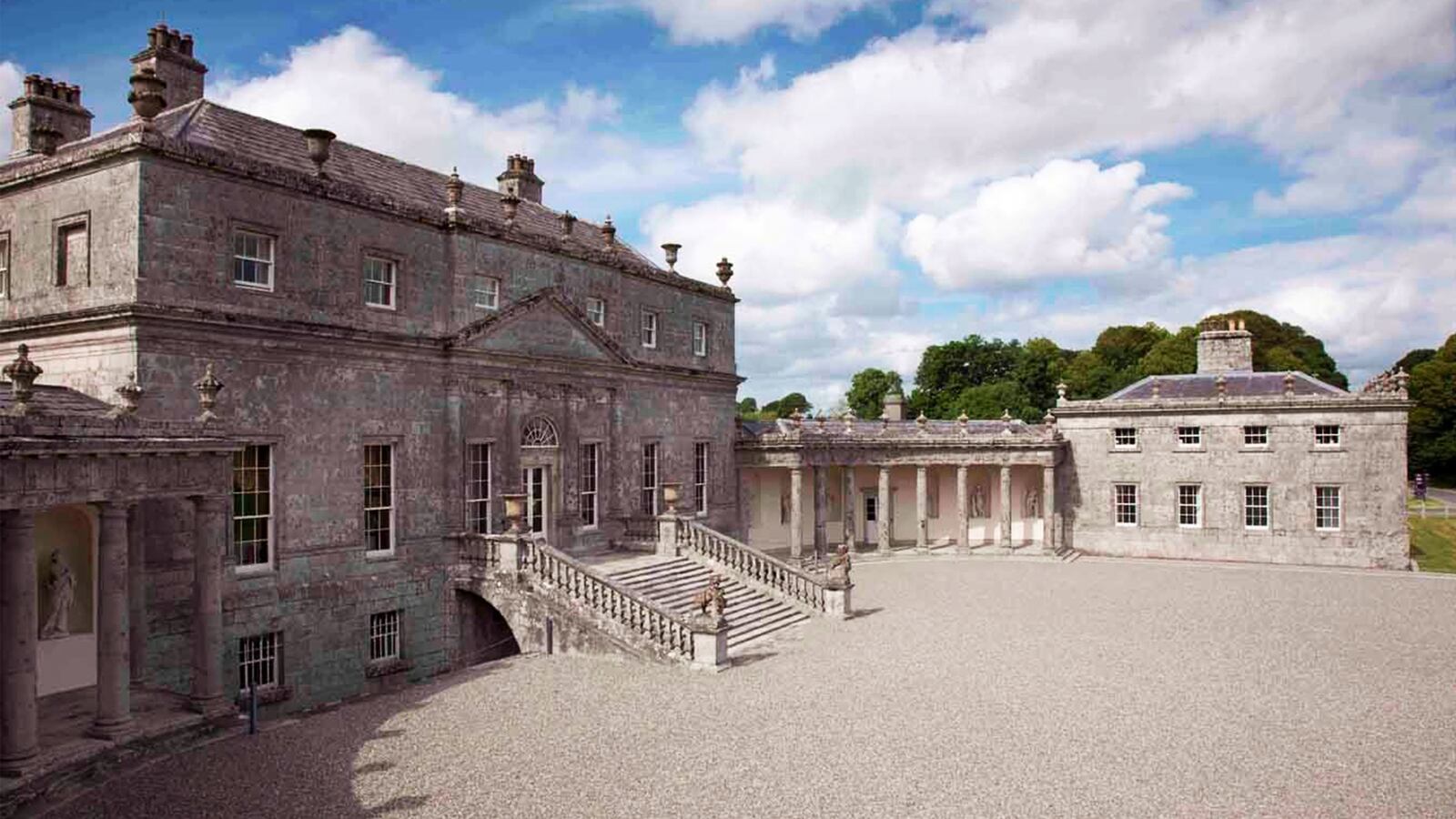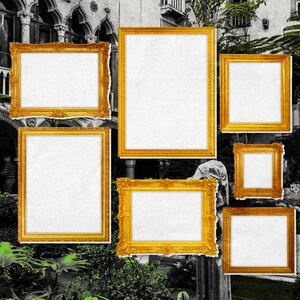Some might attribute Russborough House’s history to bad luck, and maybe that’s how it started. But the real problem was one of exposure.
After a gang of IRA supporters led by the former British socialite Rose Dugdale violently forced their way into the home and absconded with some of its finest works of art in 1974, it was as if a spotlight had been directed at the mansion, calling all criminals to try their luck and exercise their sticky fingers. Despite security upgrades and the recovery work of the Irish police, the home would be robbed an additional three times over the next 28 years.
“Russborough House seems to be a proving ground for Dublin criminals,” Brian Lavery wrote in The New York Times in 2002 on the occasion of the fourth theft, which occurred less than a month after the paintings had been recovered from the third.
A total of 44 paintings have been stolen, many of them consisting of the same canvases nicked over and over again. But, despite the large number of thefts, only two paintings remain missing today.
In 1986, the notorious Dublin gangster Martin Cahill directed the theft of 18 paintings, including a Vermeer, a Goya, and a Rubens. But it is two 18th-century capricci by painter Francesco Guardi depicting fantastical Italian architectural scenes that are still in the wind.
During his time as a detective for the Metropolitan Police, Charles Hill was involved in securing the return of some of the Cahill-stolen works. Now, as an art crime researcher and security consultant, he is on the hunt for the two missing Guardis, both of which he believes are in Florida.
“Both were bought by somebody who probably has them on the wall, is very proud of them, and doesn’t have a clue that they were stolen,” Hill told The Daily Beast. “It is probably an Irish-American as well, and his or her descendants.”
Guns, blood, and a gramophone
The Russborough crime spree began back in 1974 with one woman who had plowed through her inheritance after disowning her family and needed a new way to support her IRA cause. According to Simon Houpt in Museum of the Missing, Rose Dugdale was “an English, Oxford-educated, spoiled little rich girl who fell from favor with her establishment father and crossed both the law and the Irish Sea to aid the Irish Republican Army.”
Because of her posh background, Dugdale was familiar with the contents of fine country homes. When she realized she and her cause were short on cash, she turned to the world she knew best. Russborough House was not her first target. That honor goes to her own family’s country estate, which she robbed in June 1973 in a crime that landed her in court facing off against her father.
But even a run-in with the law couldn’t deter Dugdale. Less than a year later, she set her sights on a Palladian mansion in the Dublin mountains just a short drive from the city.
Built in the 1740s, Russborough House is one of the finest country homes in Ireland. Just over two centuries after the last stone was put in place, the home was acquired by Sir Alfred Beit, heir to a diamond-mining fortune. He and his wife Lady Clementine moved in and hung their impressive art collection on the walls. As Lady Clementine told Hill when they met over 20 years ago, “Alfred and I didn’t have any children, these were our children.”
The Beits were home on the evening of April 27, 1974, when Dugdale politely knocked at Russborough House under the guise of asking for car assistance. When the butler’s son opened the door, Dugdale and her three masked male accomplices very impolitely forced their way in holding guns.
“We were sitting in the library, my wife and I, playing the gramophone,” Beit told RTE. “About 10 past nine, the door burst open and three armed men brandishing pistols rushed into the room and told us to get down and lie down flat on the floor with our heads down. I looked up at one of them, for which I got the reward of a blow with the butt of a pistol on my head, which brought about a little blood but it wasn’t serious.”
The crew tied up the couple, moving Lady Clementine to the basement, and ripped 19 paintings from their frames, taking a break only to periodically shout “Capitalist pig” at the lord of the manor. Within 10 minutes they were gone.
Shortly after the break in, a ransom note was issued. The thieves were willing to return five of the paintings in exchange for IRA prisoners; the other paintings would be released for a $1.2 million payment.
But, like Dugdale’s first foray into crime, her Russborough House gambit failed to pay off. The Irish police launched a national search and discovered the Most Wanted Brit in a holiday cottage 50 miles from Cork. All of the paintings were with her and were recovered with very limited damage eight days after they were taken.

"Empty frames in a room at Russborough House, home of millionaire art collector Alfred Beit. A gang stole 19 paintings from the property in County Wicklow."
PA Images/GettyAt the time, this robbery was considered the biggest art theft in history, and it garnered international press. The heist was so brazen and unthinkable that it is perhaps no surprise that when Russborough House was robbed again 12 years later, authorities initially suspected it was the IRA, up to their old tricks.
But it turned out that the second breach was not the handiwork of rebels from the north, but rather a job pulled off by the infamous Irish gangster known as “the General,” Martin Cahill.
Cahill took a less violent approach to art theft. His crew cut through a side window to set off the home’s alarm system, which was installed after the 1974 robbery, and then retreated half a mile away to wait. The cops showed up, disabled the alarms, took a look around, had a spot of tea, and then left when they didn’t see any evidence of lurking ne’er-do-wells. It was then that Cahill’s gang returned and stole 18 paintings in six minutes without being detected.
The next day, seven of the paintings were discovered abandoned near the mansion by some boys on a fishing expedition. But for the remaining 11, their saga was just beginning. Like many gangsters who suddenly discover the value of fine art and assume they’ve stumbled on a quick payday, Cahill had no idea how difficult it would be to offload his famous loot.
“At the time of his stealing the paintings he had no idea how to dispose of them, but through a process of trial and error he explored all the possibilities… starting from the totally naive point of trying to sell it on the open market for its true value, he moved to selling it on the black market,” Richard Ellis, a member of Scotland Yard’s Art and Antiques Squad, told writer Joshua Knelman for his book Hot Art.
Hill first became involved with the Russborough theft after the Metropolitan Police offered their assistance to help recover the masterpieces. One painting was intercepted in Turkey. Another six were discovered in the early 1990s stashed in homes and businesses around London.
But four works continued to allude the authorities before they got their big break.
In an effort to finally make a profit from his stolen art, Cahill made a deal with a Belgian diamond dealer. He would hand over the remaining masterpieces as collateral for a loan with which he would invest in a supply of drugs. Once he had recouped the money on the streets, he would pay the diamond dealer back, resume possession of the paintings, and try to repeat the scheme.
But the diamond dealer undercut him and decided to try to sell the paintings on his own. The police orchestrated a sting, and Hill went undercover as an interested art buyer. He met the criminals in a parking lot at an airport in Belgium, where the four paintings were stashed in the trunk of a car. They were successfully recovered.

"An abandoned van at Kilbride, where seven of the 17 paintings stolen from Russborough House were recovered"
PA Images/GettyThe final two thefts occurred in 2001 and 2002, in both cases involving thieves who decided to go the brute-force route: ramming a car into the house to create an opening. In the former, the two stolen paintings were discovered over a year later. In the latter, the five looted paintings went on the lam for less than three months, leaving the two Guardis the only works of art who have yet to be returned to the collection.
In the late 1990s, Hill met Lady Clementine at the celebration for the opening of the Beit wing at the National Gallery of Ireland. After she thanked him for his efforts recovering the four works in Antwerp, Hill made her a promise: “I said I was glad to have done it. And I also said I’m aware that the two Guardis are still missing, and I’ll do everything I can to recover them for you, even if you’re no longer here… I said I will keep going until I drop to get them back to where they belong.”
This has not been an easy task. Over the years, Hill has gone on a wild goose chase through Belgium on a tip from a group of Irish Travelers that one of the Guardis was there. “Put literally, I was had,” he said. But today, he is fairly confident that both paintings are in Florida.
Among other famous art crimes, Hill is also investigating the whereabouts of the paintings taken in the infamous Isabella Stewart Gardner theft, one of the most notorious museum heists in history. For this work, he is in contact with an associate of the late Martin Cahill, a man named Martin Foley, who is also known as “the Viper.” Hill says Foley doesn’t know where the Guardi’s are, but it is information gleaned from him that has turned Hill’s focus to the Sunshine State.
“I’m relying on my instincts when I say this,” Hill says. “I’m as sure as I can be that those two Guardi capriccio scenes of the Veneto are still in existence, and I have no doubt, no doubt at all, that they’re up on a wall somewhere and somebody is very proud of them, but doesn’t realize their significance.”
His search continues.


